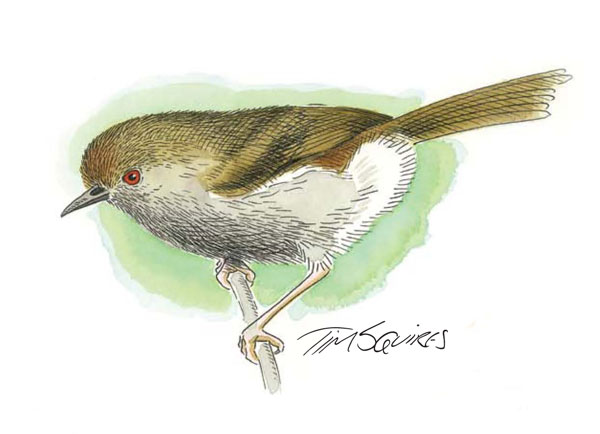
STANDING in a park in London earlier this year – the wood pigeons cooing softly in the branches of an oak above my head – I had a flashback to the first time I became aware of birds and their songs.
People often ask me how my interest in birds started and I had always ascribed it to the day a flock of bluetits flew into my classroom shortly after I had started primary school in the early 1950s.
I now know it wasn’t that day, because there was no sound beyond the gentle whoosh of beating wings as the bluetits fluttered against the windows trying to escape.
With the song of the wood pigeons, however, it all came back to me so clearly, because sound is such a powerful source of memory, along with sight and smell. Looking closely at the wood pigeons, I remembered that first sight of their subtle beauty from more than a half century ago. The slate-grey plumage infused with shades of soft pink on the breast, a flash of white around the collar. The pigeons were plump and seemed to stand upright and tall on the branches.
On a bleak, winter’s day, standing on the spot near where my cousin’s house once stood on the edge of the park, I remembered the wood pigeon experience as though it was yesterday.
I mention this childhood first impression of birds, and the impression it made on me, because I attended the launch of an initiative on July 16 to bring the wonder and magic of not just birds, but wild animals, to the schoolchildren of today.
An education kit, Tasmanian Wildlife Matters, has been produced for both schools and the general public with the aim of changing the way people view Tasmanian wildlife and its place in their lives. The resource kit has been mailed to every primary and secondary school in the state and it will enable children to study in detail our native birds and animals, from the biggest forester kangaroos to the tiny Tasmanian thornbills and spotted pardalotes, and how human activities impact on these species.
When I was growing up what was termed “nature study” was an essential part of the school curriculum and I was surprised to discover on arriving in Australia that this was not the case in this country. I have since learned from teacher friends that this is being addressed with a new curriculum centred on the science-based subject of sustainability and Tasmanian Wildlife Matters will no doubt plug into this field of study.
The kit includes fact sheets on a number of birds and animals and further information on how animals suffer in man’s world. It also provides tips for protecting farms and gardens from wildlife, using non-lethal methods. There is also a section on roadkill and how this can be avoided.
A fact sheet entitled “Living with wildlife – alternatives to lethal control” perhaps best sums up the tenor of the information kit.
It says in its introduction: “Living with wildlife harmoniously requires a change of perspective. Rather than seeing them as the enemy who eats ‘our’ food, ‘our’ pasture, ‘our’ trees, we should see wild animals as creatures that we share the planet with, as co-inhabitors whose right to go about their business we respect.
“Humans are taking increasing amounts of natural habitat away from native species, clearing it and polluting it.
“It is time the tide turned and some understanding is reached by humans that other species have a right to their natural habitat and food sources, and their own piece of the earth to live on.”
Funded by Voiceless, the kit is a joint project of Against Animal Cruelty Tasmania and the Tasmanian Conservation Trust. It is available in printed form and also for download from www.wildlifematters.org.au